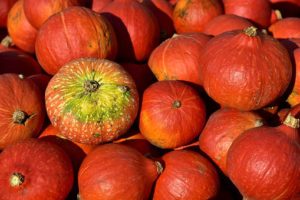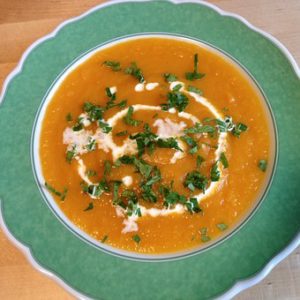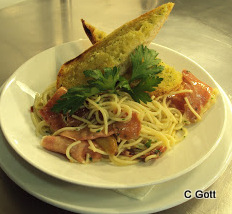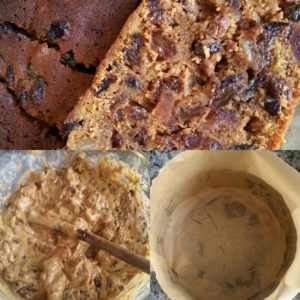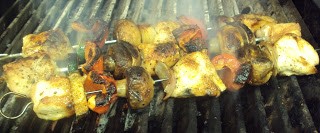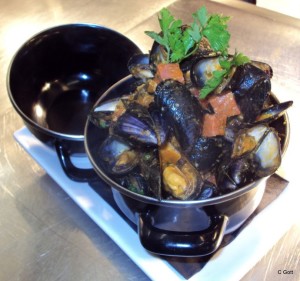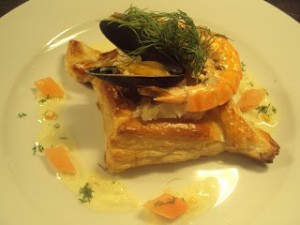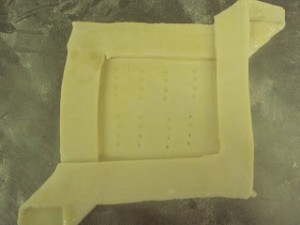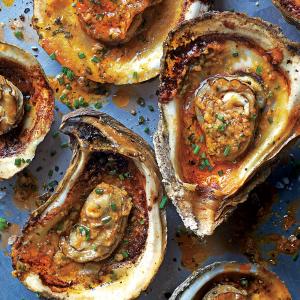We are if you are unaware in a celebratory culinary alignment of epic proportions it is National Curry Week, Seafood Week, Chocolate Week and National Porridge Day. “Go on”, I hear you cry, “You’ve had all year have you come up with a recipe combining all of these?”
Well no. We had porridge for breakfast, big bowls made with creamy Jersey milk and I can hear all you spurtle welders screaming, yes made with milk.* Chocolate, I have two daughters so I could use Willy Wonka’s chocolate fountain, seafood I will save for the weekend so supper this rather chilly, wet evening was a suitable curry, one of my favourite curries in fact, Murgh Makhani or Butter Chicken. This week I have soaked lentils, pounded garlic, ginger and cinnamon sticks, roasted coriander, mustard and fennel seeds and even opened a jar of the now infamous, homemade chilli and lime pickle. I love cooking curries and balancing the complex flavours of the spices.
*The spurtle is used to stir proper porridge made with rolled oats, salt and water only. I worked for a two times winner of the Golden Spurtle but that as they say is another story.
In the meantime, if you don’t fancy cooking or you fancy celebrating the up and coming Diwali here is a list of some award-winning restaurants I can personally recommend if you want some amazing authentic Indian cooking.
Trishna – is the baby sister of a world-famous seafood restaurant in Mumbai and specialises in its own unique take on the coastal cuisine of south west India. It has a Michelin star and serves incredible food in a relaxed environment in London’s Marylebone village.
The Chilli Pickle – serves a menu with dishes from across the Indian sub-continent inspired by the travels of the two ex-pat owners. Having moved from the famous Lanes it is now housed in the Brighton MyHotel. A well lit modern designed restaurant is home to some astounding cooking.
The Cinnamon Club – is the original London restaurant of Chef Vivek Singh, he now has his own celebrity superstar mini-empire including The Cinnamon Kitchen and Cinnamon Soho. One of the first chefs to blend Indian recipes with classical western techniques the Cinnamon Club has won numerous awards and plaudits.
Also look at Veeraswamy, the UK’s oldest Indian restaurant, Tamarind, Benares, and Gymkhana, all Michelin starred brilliant restaurants, they do some wonderful, good value, set menus but best not call them curry houses.
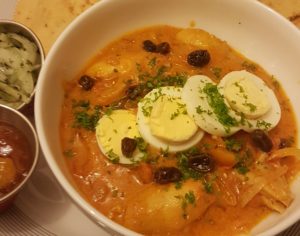
And so to Butter Chicken does not have a pedigree stretching into the dawn of history, it is believed to have been created in Peshawar and after the British partition, the chef moved to a New Delhi restaurant. A customer wanted a meal late in the evening and marinated chicken, ready for the Tandoor oven, was tossed with tomatoes, butter and spices and the Murgh Makhani ( butter chicken ) was born. While the dish looks similar to a Chicken Tikka Masala, it is more flavoursome with more depth of spicing in the rich tomato-based sauce. The Tikka Masala is Britain’s most popular curry and is believed to have been made originally with Campbell’s Condensed Tomato Soup and to have originated in the hallowed curry houses of either Birmingham or Glasgow.
The chicken, either on or off the bone, is marinated in yogurt and spices but the secret of a true Murgh Makhani is Qasuri Methi or dried fenugreek leaves. The chicken is best cooked in an extremely hot oven, a Tandoor ( if you have one ) or over coals or on a char grill to add an authentic smoky flavour before finishing in the sauce and serving. So, you can fire up the BBQ. Garnish with green chillies, sliced hard boiled eggs, coriander leaves, raisins and toasted almonds.
Murgh Makhani ( Spiced – Butter Chicken ) serves 4 – 6
for marinated chicken
1.5 kg of Chicken pieces, skin removed or 1 kg chunky diced Chicken
Juice of 2 Limes
150 gr fresh natural Yoghurt
1 medium sized red Chilli, very finely chopped
2 tablespoons Coriander Seeds
2 tablespoons Fennel Seeds
1 tablespoon Cumin Seeds
1 tablespoon Fenugreek Seeds
6 Cloves
8 White Peppercorns
¼ Stick of Cinnamon
2 Bay Leaves
8 Cardamom Pods, crushed and seeds removed
½ teaspoon Cayenne Pepper
Sea Salt
Vegetable Oil
for butter sauce
75 gr Butter in small pieces
3 tablespoons Clarified Butter or Ghee
2 medium Onions, peeled and finely chopped
8 Cloves of Garlic, peeled and crushed
3 centimeter piece of Ginger, peeled and crushed to paste
4 tablespoons Tomato Puree
8 fresh Tomatoes, de-seeded and roughly chopped
200 ml Pouring Cream
2 tablespoons Kasuri methi (dried fenugreek leaves)
¼ teaspoon Turmeric Powder
Juice of 1 fresh Lemon
Sea Salt and freshly ground Black Pepper
Coriander leaves to garnish
Toast the spices, excluding the chilli, cardamom and cayenne pepper by heating them in a medium sized, heavy bottomed frying pan, stirring occasionally, until they colour slightly. Place in a small food processor or coffee grinder with the cayenne and cardamom seeds and reduce to a powder. Mix half of your spice mix with the chilli, lime juice, and yogurt and in a large glass or ceramic bowl stir in the chicken. Cover, refrigerate and allow to marinate for at least two hours. Larger chicken pieces benefit from marinating an extra couple of hours.
Preheat your oven to 425 F / 220 C / Gas mark 7. Drain off any excess yogurt mix from the chicken and set aside. Place the marinated chicken pieces on an oiled baking tray and cook for fifteen minutes for diced chicken or twenty-five minutes for the large chicken pieces. The chicken can brown well, almost char in the oven as this improves the flavour of the finished dish. At the same time as the chicken is cooking heat the clarified butter and a little more oil in a large casserole, add the onions. Sauté the onions for 15 minutes until golden brown in and then add the ginger, garlic, remaining spice mix and the turmeric. Cook for two more minutes, stirring to prevent sticking and burning.
Add the tomato paste, tomatoes, kasuri methi, cream and any remaining yoghurt marinade to the pan and mix together. Place in the chicken and simmer for ten to fifteen more minutes till the chicken is tender and the sauce has reduced and thickened. Do not boil as the sauce will split. Finish the sauce by correcting the seasoning and immediately before serving stirring in the lemon juice and butter pieces. Garnish with coriander leaves and serve with Naan bread and rice.


